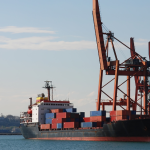In a strategic move that momentarily pacifies global markets, the nations involved have opted to extend their current agreement for an additional three months. This extension arrives just hours before a previously agreed deadline, effectively putting a temporary halt to any abrupt shifts in trade rules. The decision allows both parties to continue critical discussions that address structural economic imbalances and industry tensions. For companies on both sides, this delay buys time to reassess strategies, review cost structures, and avoid reactionary shifts in pricing that could destabilize operations.
The continuation of the agreement means that current trade terms, including prevailing tax levels and regulatory conditions, remain intact for now. This status quo avoids surprising disruptions to supply chains that have been strained by rising costs and geopolitical uncertainty. Manufacturers, exporters, and logistics networks can cautiously maintain their operations without scrambling to adjust to sudden escalations. Meanwhile, market confidence gains a buffer, helping to stabilize investment flows and consumer expectations across industries.
By granting this extension, both parties demonstrate a commitment—at least publicly—to dialogue over confrontation. Talks are expected to delve into weighty issues such as access to raw materials, technology sharing rules, export controls, and wider industrial subsidies that have long shaped the complex landscape of global trade. The talks also open room to explore future cooperation in sectors like semiconductors and rare minerals, areas critical to innovation and national security alike. Each concession or clarification reached during this time could set a precedent for long-term alignment or recalibration.
Financial markets responded to the news with cautious optimism, as global indexes reflected a collective sigh of relief. Traders took the reprieve as a signal that the most disruptive economic policies might be postponed—though not permanently shelved. For investors, this translated into stabilized forecasts and reduced volatility, at least in the near term. Yet analysts warn that unless this window yields concrete progress on underlying issues, businesses may quickly revert to defensive postures—tightening budgets, delaying hires, or accelerating diversification away from highly exposed sectors.
Agricultural exporters, technology firms, and resource sectors are among those watching most closely. Farmers hoping to export goods must now wait on the resolution of access terms, while chipmakers and advanced manufacturers evaluate whether regulatory conditions will ease in light of recent concessions. Resource-rich economies that supply essential inputs are also paying attention, as changes in demand patterns could loop back through global logistics chains. Across the board, this pause offers an opportunity but also a moment of uncertainty—companies must remain nimble.
Beyond bilateral implications, this extension provides a ripple effect for allied economies and multinational enterprises. Nations that supply intermediate goods, manage shipping routes, or participate in broader value chains might find temporary relief in reduced tariff escalation. Investors outside the primary economies may recalibrate their risk assessments, especially in emerging markets sensitive to shifts in cost and demand. As global financial institutions digest the extension, currency flows, raw material prices, and regional trade agreements will all remain fluid.
Yet the underlying disputes remain unresolved. Structural differences in regulatory practices, state subsidies, intellectual property enforcement, and strategic industrial support systems linger. The ceasefire does not signal an end to these systemic disagreements. Rather, it presents a pause—a chance to negotiate mitigation rather than resolution. Governments continue to face domestic pressures to protect key industries, and public expectations may demand visible results before deeper compromises are politically feasible.
Ultimately, the renewed agreement underscores that cooperation, even amid rivalry, remains a viable—if fragile—path forward. Observers now look toward whether this breathing space leads to incremental accords that build trust and commercial predictability. For now, economies, firms, and markets have a brief window to regroup and plan, hopeful that diplomacy and pragmatism can yield a sustainable framework where both sides find value in continuity rather than conflict.
Author: Eura Tymal







